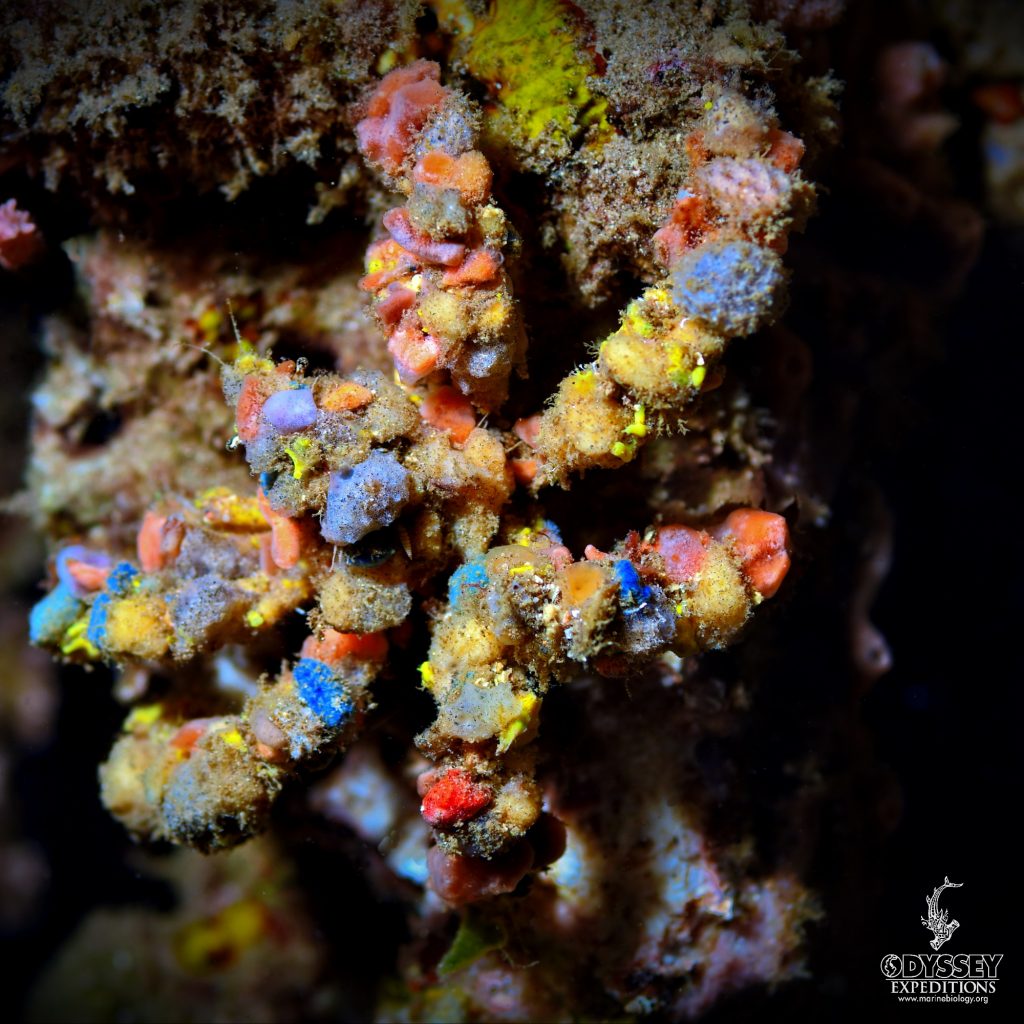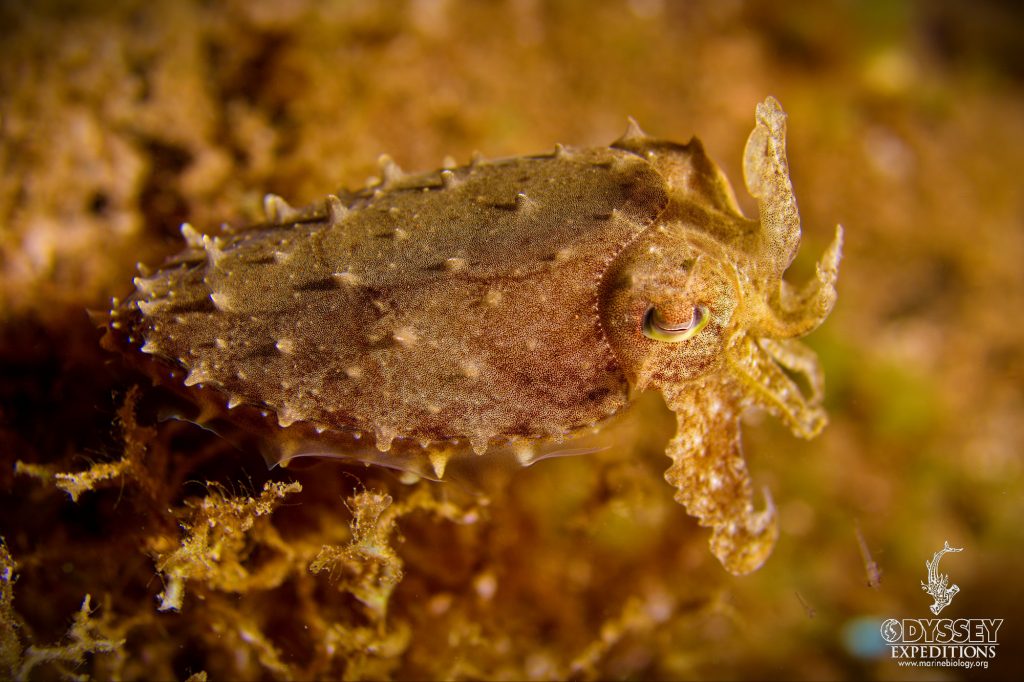
Whitemargin Stargazer fish – Uranoscopus sulphureus – Stargazers are not a fish to mess with. They have double-grooved poison spines behind the operculum and above the pectoral fins and wounds can be quite serious. Stargazer possess electric organs located in a specialized pouch behind the eyes and can discharge up to 50 volts, depending on the temperature of the water at the time! Because stargazers are ambush predators which camouflage themselves and some can deliver both venom and electric shocks, they have been called “the meanest things in creation”. The fish is often locally known as the mother-in-law fish.
Inhabits reef flats but is rarely seen because it lies buried in the bottom most of the time, with only the eyes showing. When buried, the cirri on the edge of the mouth serve to keep out the sand during respiration. The oral lure is used to attract the prey within striking range of the mouth.
This little fellow was only about 15cm long but they get to a maximum length of 45.0 cm.
Etymology: Uranoscopus: Greek, ouranos = sky + Greek skopein = to watch








